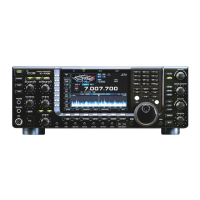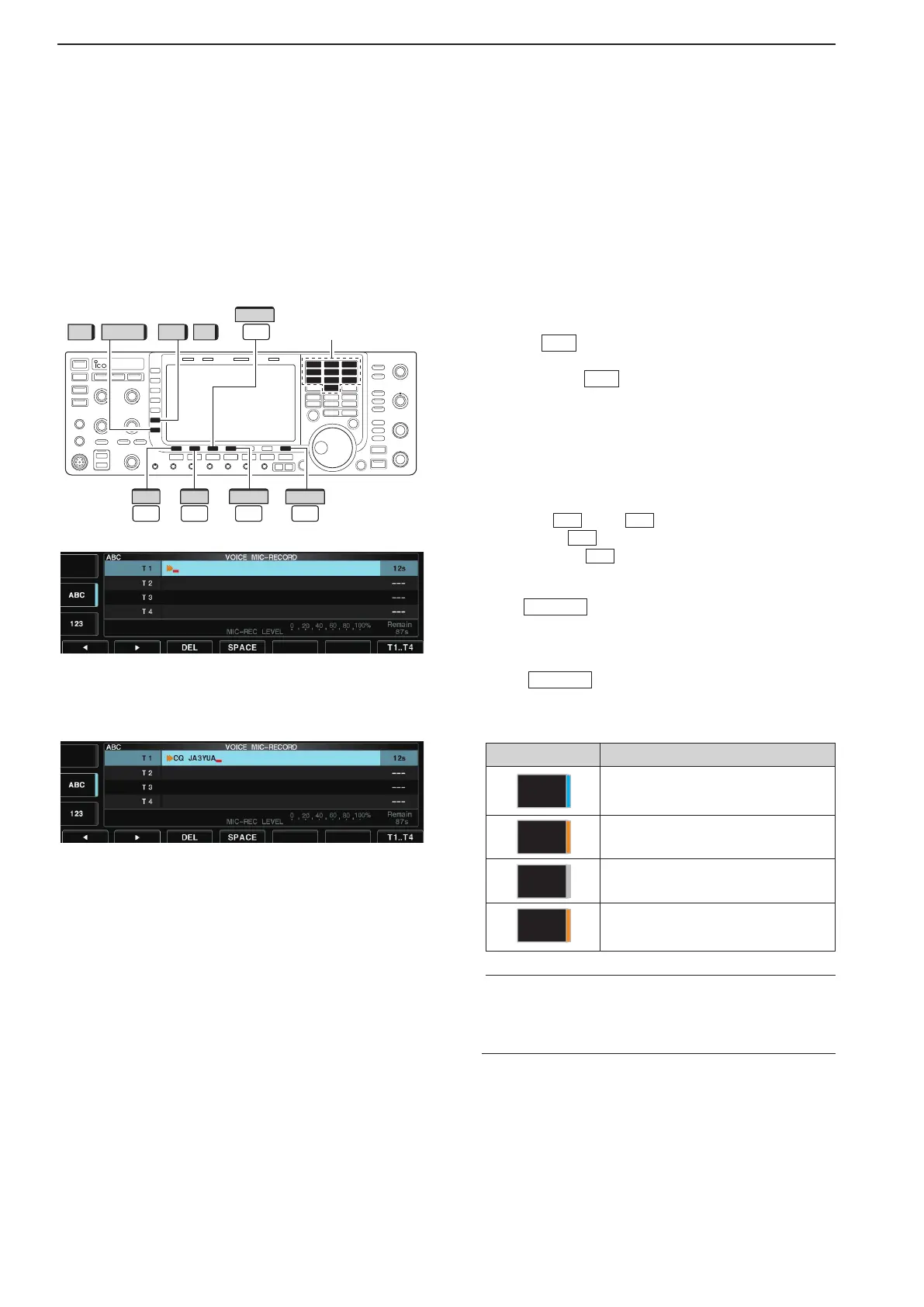7-10
7
VOICE RECORDER FUNCTIONS
■ Programming a memory name
Memory messages can be tagged with alphanumeric
names of up to 20 characters each.
Capital letters, small letters, numerals, some symbols
(! # $ % & ¥ ? “ ‘ ` ^ + – ✱ / . , : ; = < > ( ) [ ] { } | _
~
@)
and spaces can be used. (See the table below.)
q Record a message as described in page 7-9.
w During the voice mic. record screen display, push
[NAME]
F-5
to enter memory name edit condition.
•Acursorappearsandblinks.
e Push [T1..T4]
F-7
several times to select the de-
sired voice message.
r Input the desired character by rotating the main dial
or by pushing the band key for number input.
•Push[ABC](MF6) or [abc] (MF6) to toggle capital and
small letters.
•Push[123]
(MF7) or [Symbol] (MF7) to toggle numerals
and symbols.
•Push[t]
F-1
or [u]
F-2
for cursor movement.
•Push[DEL]
F-3
to delete the selected character.
•Push[SPACE]
F-4
to input a space.
•Pushing thetransceiver’skeypad, [0]–[9],canalso
enter numerals.
t Push
EXIT/SET
to input and set the name.
•Thecursordisappears.
y Repeat steps e to t to program another voice
message’s name, if desired.
u Push
EXIT/SET
twice toexit the voice recorder
screen.
• Voice memory name editing example • Usable characters
✔ For your convenience
When a PC keyboard is connected to [USB] con-
nector on the front panel, the memory name can
also be edited from the keyboard.
Keypad
T1..T4
F-7
//
F-3
DEL
123 Symbol ABC abc
F-1
Ω
F-2
≈
F-4
SPACE
Key selection Editable characters
A to Z (capital letters)
a to z (small letters)
0 to 9 (numbers)
! # $ % & ¥ ? “ ‘ ` ^ + – ✱ / . , : ; =
< > ( ) [ ] { } | _
~
@

